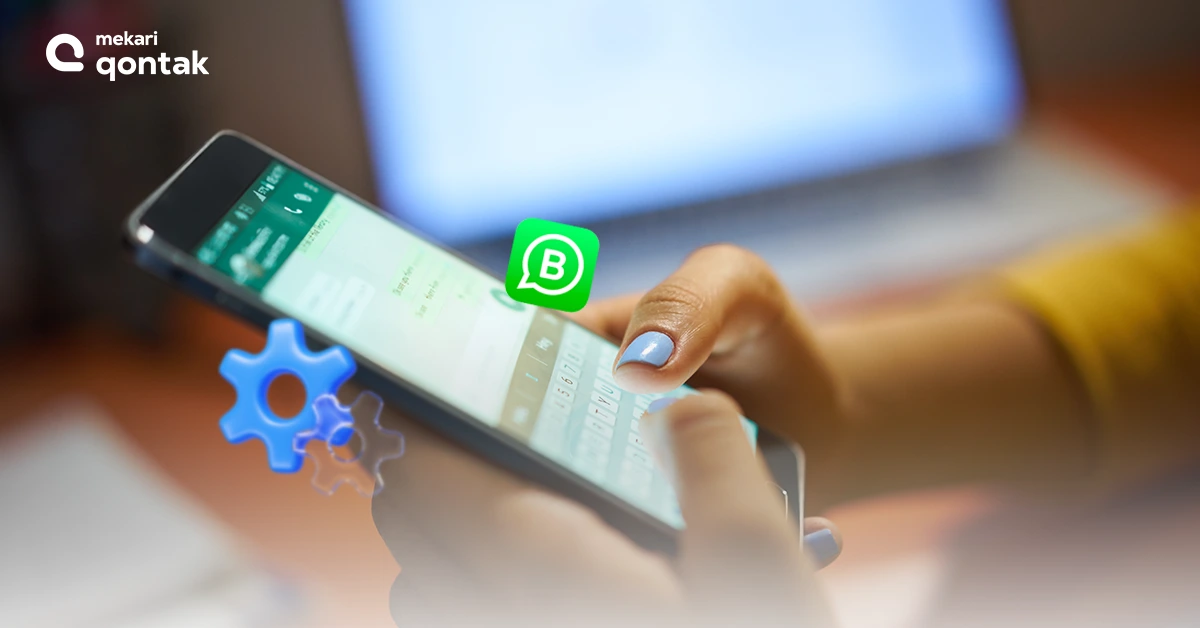
In the enchanting world of business, two magical strategies often take center stage: cross-selling and upselling. But which of these enchanting spells is more beneficial to your business? What is the difference?
Where opportunities are plentiful, selling is more than just transactions. It’s about building strong customer relationships, making their experience better, and, of course, boosting your business’s financial success. Cross-selling and upselling are two techniques that can help you achieve these goals.
What is Cross-selling & Upselling?
Cross-selling and upselling are like twin wizards in your sales house. They both aim to increase your revenue, but they do so in slightly different ways.
Both of these techniques can boost your business’s income, but they have their own ways of doing it. It’s essential to know when and how to use them effectively in your business strategy.
1. Cross-selling
Cross-selling is offering customers another but still related item to what they’re already buying. It’s about expanding their purchase horizontally by suggesting additional products or services that make sense alongside their main choice.
Imagine you’re browsing an online bookstore, exploring a fascinating selection of e-books. As you add your favorite mystery novel to your digital cart, a friendly pop-up suggests adding related titles, a cozy reading chair, and a warm cup of virtual coffee to enhance your reading experience. That’s cross-selling!
| Aspect | Cross-Selling | Upselling |
| Objective | Offer related items that go with the main purchase | Encourage customers to pick a better or pricier version that |
| Customer perception | Makes shopping easier and more enjoyable in a way by giving options |
2. Upselling
Upselling, on the other hand, is about encouraging customers to spend more by choosing a higher-priced or premium version of what they’re buying. It’s like offering them an upgrade to something better or with more features.
Now, picture yourself shopping on an e-commerce website, looking for a high-performance laptop with impressive specifications. The clever chatbot, with a knowing smile (well, virtually), recommends the premium version of the laptop with more memory, faster processors, and exclusive digital accessories for just a slightly higher virtual price and that’s what we called upselling!
The Difference between Cross-Selling and Upselling
Cross-selling and upselling, these two approaches, while aimed at boosting sales, possess distinct methods and objectives. Cross-selling widens a customer’s purchase with related items, while upselling deepens it by suggesting higher-tier choices.
Let’s explore these differences and their impact on your business.
| Aspect | Cross-Selling | Upselling |
| Focus | Broadening the customer’s purchase by suggesting related products or services | Deepening the customer’s purchase with superior or upgraded options |
| Product/service offered | Related or complementary products or services | Superior or enhanced versions of the same product or service |
| Goal | Increasing the average transaction value and enhancing the customer experience | Maximizing revenue per share while offering premium experience |
| Timing | Typically offered before /during checkout | Often presented during the purchasing process, after the customer’s initial/main choice |
| Conversion rate | Often has a higher conversion rate as it aligns with the customer’s original purchase | May have a lower conversion rate due to the higher cost associated with premium options |
Now that we understand these differences, you are equipped to explore how cross-selling and upselling can help your business achieve its unique goals.
Read more: 15 Strategies for Increasing Your Website’s Conversion Rate
How to Cross-Sell and Upsell?
After we’ve got the hang of what cross-selling and upselling are, let’s dive into how to use them effectively. It’s like knowing the spell moves; you just need the right steps on how to swing your hand correctly. Here’s a handy guide to help your business shine at cross-selling and upselling:
- Get to know your customers. Start by understanding your customers – what they like and how they shop. This will guide your offers.
- Make it personal. Treat each customer uniquely. Don’t use one-size-fits-all offers. Instead, recommend things that suit their taste based on what they’ve bought before. You can also use customer segmentation and purchase history to provide personalized recommendations.
- Explain the benefits. Tell your customers why your suggestions make sense and how it will make their experience better. Deliver clear explanations to your customers.
- Bundle smartly. Create packages that give customers a deal when they buy related stuff together. Just like getting a bonus, bundling can be a powerful cross-selling tactic, as customers perceive added value.
- Try things out. Experiment with different ideas. Test what works best for your customers, and adjust your strategies accordingly.
By following these simple steps, you’ll be able to implement cross-selling and upselling, boosting your business’s profits and keeping your customers smiling.
Strategy Setting for Cross-Selling & Upselling
You’ve gathered the basics of cross-selling and upselling, now, let’s delve into the strategies that can help you master these techniques and boost your business’s success.
1. Set Customer Segmentation
Segment your customer base based on their preferences and buying behavior. Customer segmentation can help to tailor cross-selling and upselling strategies to each segment.
For instance, if you run an online bookstore, offer personalized book recommendations based on a customer’s previous purchases. If they’ve bought a mystery novel, suggest related titles or even a subscription to a mystery book club.
2. A/B Testing
Experiment with different offers and messaging to see which ones resonate best with your audience. Continuously refine your approach based on the results.
If you operate an e-commerce fashion store, conduct an A/B test for your email campaigns. One version suggests a general discount, while the other, personalized based on the customer’s past purchases, recommends accessories or clothing items that complement their style.
3. Timing Setting
Timing plays a crucial role. Choose the right moment to present cross-selling and upselling offers.
For example, if you operate an e-commerce store, strategically place cross-sell suggestions just before checkout, when customers are most likely to add complementary items to their cart.
4. Train Your Team
If you have a sales team, ensure they are well-trained in cross-selling and upselling techniques. Effective communication and understanding customer needs are crucial skills.
For instance, in a retail environment, train your staff to suggest matching accessories when customers purchase clothing.
5. Post-Purchase Follow-Up
After a customer makes a purchase, follow up with personalized recommendations for complementary products or upgrades that enhance their initial choice.
For an electronics retailer, this bundle might include a phone case, screen protector, and wireless earbuds – all at a discounted rate. Such a post-purchase follow-up not only enhances the customer’s experience but encourages additional purchases.
6. Customer Loyalty Programs
Reward loyal customers with exclusive cross-selling and upselling offers. Show appreciation for their repeat business.
If you operate a coffee shop, loyal customers could join a program that grants them early access to new brews or exclusive discounts on premium coffee blends.
7. Data Analysis
Regularly analyze data on customer behavior and conversion rates to fine-tune your strategies. Look for patterns and adjust your offerings accordingly.
If you manage an online streaming platform, use algorithms to analyze a user’s viewing history and preferences. Suggest movies, series, or genres they are likely to enjoy based on their past interactions.
Cross-selling Practical Examples
Cross-selling is the secret spell in many successful business strategies. In the following examples, we’ll witness how renowned brands apply the art of cross-selling to make shopping more convenient, enjoyable, and profitable for both them and their customers.
1. Amazon – Cross-Selling Mastery
Amazon, the e-commerce giant, is a prime example of cross-selling done right. When you browse a product, say a laptop, Amazon’s product pages display not just the laptop but also complementary items like laptop bags, accessories, and even software that complements the device.
By suggesting these additional items, Amazon increases the average order value while providing customers with a convenient one-stop shopping experience.
2. McDonald’s – Combo Meals
McDonald’s, the renowned fast-food chain, employs cross-selling through its combo meals. When you place an order, such as a burger, McDonald’s offers you the option to upgrade to a combo meal. This combo typically includes the burger, fries, and a drink at a bundled price, which is often more affordable than ordering each item separately.
This clever cross-selling technique entices customers to transform for the complete meal deal, increasing the overall transaction value while providing a more satisfying dining experience.
3. Apple – Accessories Galore
Apple, the tech giant, is known for its skillful cross-selling of accessories. When customers purchase an Apple product, such as an iPhone or iPad, Apple Store employees or the website suggest a range of accessories like cases, headphones, and chargers that complement the device.
This approach enhances the customer’s overall experience while increasing the purchase value.
These examples demonstrate how diverse brands in various industries implement cross-selling techniques to enhance customer experiences and increase sales. By strategically suggesting related or complementary products and services, these businesses effectively leverage cross-selling to benefit both their customers and their bottom line.
Upselling Practical Examples
Upselling is a smart strategy that encourages customers to choose premium options, elevating their experience and boosting business revenue. Upselling, the magic of suggesting something even better, brings that world to life.
In the following examples, we’ll explore how top brands skillfully apply upselling techniques across various sectors, showcasing the art of suggesting superior choices to customers.
1. McDonald’s – The Upsell Classics
The fast-food giant McDonald’s has perfected the art of upselling. When you order a meal, they often ask if you’d like to “supersize” it, adding a larger drink and fries for a slightly higher price.
This tactic encourages customers to spend a bit more for a more substantial meal, effectively increasing the transaction value.
2. Qatar Airways – Enhancing Travel with “Premium Cabin Upgrades”
Qatar Airways, a globally recognized airline, employs an effective upselling strategy by offering travelers the opportunity to upgrade to their “Premium Cabins” during the booking process. This upgrade provides better amenities like comfy seats, gourmet food, and priority services.
For Qatar Airways, it boosts earnings and keeps passengers content, especially those seeking a more luxurious trip.
3. ESPN+ – Elevating Football with “Football Pass”
ESPN+, the sports streaming platform, effectively employs upselling with its “Football Pass.” This upsell unlocks access to a range of football content, including live matches from the English Premier League (EPL) and UEFA Champions League (UCL).
Subscribers choosing the “Football Pass” can enjoy an immersive football-watching experience, ensuring they never miss their favorite sport’s action.
For ESPN+, this upselling strategy not only increases subscription revenue but also caters to the preferences of ardent football fans, providing them with a comprehensive sports entertainment package and increasing the customer engagement.
Cross-selling and Upselling: Which one is more beneficial?
As we conclude our magical journey through the world of cross-selling and upselling, you might find yourself pondering which spell is truly more beneficial for your business. The answer, like many things in business, isn’t a simple one. It’s more about choosing the right spell for the right moment.
It’s not a choice between one or the other but a synergy between both. The secret is in using them harmoniously to create extraordinary results.
With Mekari Qontak, you’ll have the ultimate tool such as Omnichannel marketing and CRM Software to master the art of cross-selling and upselling in a way of your marketing activity, ensuring your customers receive offers that truly resonate with them.
Don’t miss out on this opportunity to enchant your customers and boost your business. Get started now and let the magic unfold!






